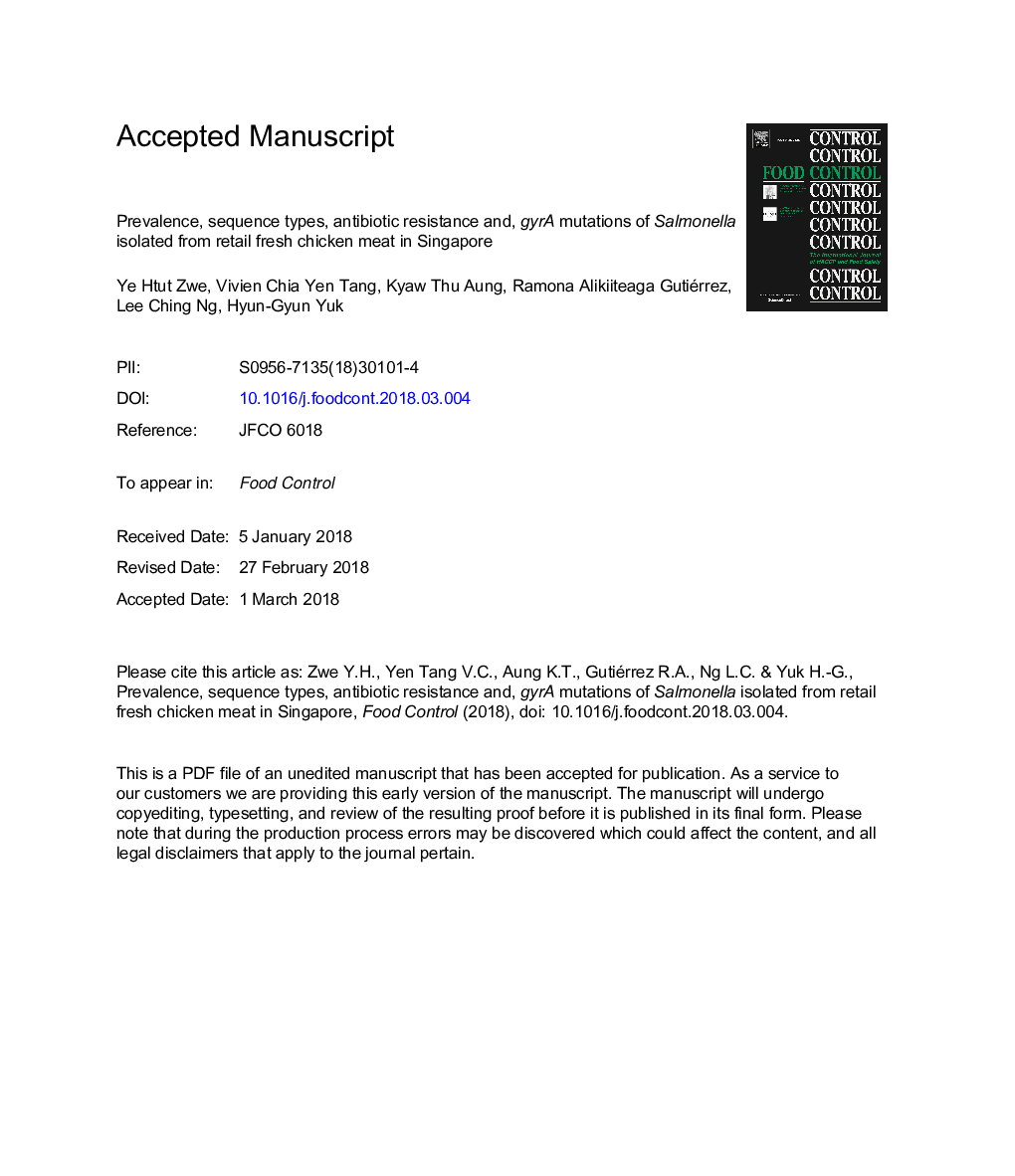| Article ID | Journal | Published Year | Pages | File Type |
|---|---|---|---|---|
| 8887980 | Food Control | 2018 | 38 Pages |
Abstract
Salmonellosis, caused by multidrug-resistant Salmonella species, in particular, is one of the leading notifiable foodborne diseases in Singapore and an emerging public health concern worldwide. The objectives of this study were to determine the prevalence, antibiotic resistance and the presence of gyrA and parC mutations in Salmonella isolated from retail fresh chicken meat in Singapore. A significantly higher prevalence of Salmonella was found in chicken meat from the wet markets (25%, 30/120), as compared to supermarkets (12.7%, 19/150). The top four serovars isolated in this study were S. Saintpaul (32.7%, 17/52), followed by S. Brancaster (21.2%, 11/52), S. Albany (11.5%, 6/52), and S. Stanley (9.6%, 5/52). More than 80% of Salmonella isolates exhibited resistance to at least one of eleven antibiotics tested. The most common phenotypic resistances exhibited were towards ampicillin (78.8%, 41/52), tetracycline and chloramphenicol (61.5%, 32/52), sulfamethoxazole-trimethoprim (55.8%, 29/52) and nalidixic acid (30.8%, 16/52). Of the 52 Salmonella isolates, 59.6% (31/52) were multi-drug resistant strains, resistant to 3 or more antibiotic classes. No mutation in parC gene was found in any of the isolates that expressed phenotypic resistance or reduced susceptibility towards quinolone and/or fluoroquinolone. Mutations at two different sites of gyrA gene were found in 7 isolates, which further discriminates the quinolone resistance genotype in Salmonella isolates from fresh chicken meat. Our findings provide opportunities for risk assessment and management of salmonellosis and antibiotic-resistant Salmonella species in the country and the region.
Related Topics
Life Sciences
Agricultural and Biological Sciences
Food Science
Authors
Ye Htut Zwe, Vivien Chia Yen Tang, Kyaw Thu Aung, Ramona Alikiiteaga Gutiérrez, Lee Ching Ng, Hyun-Gyun Yuk,
